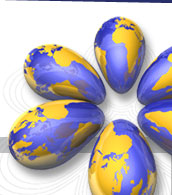As everybody knows, the quality of a wine is not just down to chance. What’s more, possessing a vineyard in a region which is considered privileged is not enough to ensure that a quality wine will be produced; equally, a «great» vine does not systematically produce a great wine. This is because each grapevine has not only everything necessary for producing the best wine, but also everything needed to produce the worst.
It is a blend of many factors that allows a wine to climb to the top of the pyramid of quality. One could cite the following examples: the vine, the land (the soil and the subsoil), the climate, the annual meteorological conditions and so on. One should also not forget the knowledge patiently accumulated by generations of wine growers and winemakers. Considerable scientific contributions from over half a century enable us to quickly understand observations made by earlier wine growers observed.
This paper will focus more particularly on the qualities of sparkling or effervescent wines, linked to the work of the winemaker. We will see that with the same grape, it is indeed possible to produce the worst and also the best sparkling wine. What is true for still wines becomes particularly flagrant for sparkling wines. It is clear that there are three periods in the life of sparkling wines which are of particular significance for their qualities.
•
The grape harvest, and primarily the pre-fermentation phases, because it is at this time that the composition of the wine is established.
•
The assemblage (blending): It is at this stage that the qualities and balances obtained at the harvest are selected and fixed.
•
The disgorgement and dosage: The wine needs to have been ready for a long time when this is performed. It is too late at this stage to «start» production, or to perform an important modification. Only a few finishing touches may be carried out. Disgorgement and dosage are a great shock for the wine, and so, for this reason, it must be prepared very carefully.
In this paper, we will study, in detail, the elements which make the qualities of sparkling wines, and how these are obtained from the pre-fermentation phases. In a further report, we will talk about the two phases that follow, namely assemblage and dosage. The purpose of this paper will not be to go back over the basic pressing techniques. We will assume that everybody knows them, as there have been a particularly large number of publications and papers devoted to this subject. Moreover, there is a great awareness, in all methods of vinification, of the importance of pressing to the quality of wines.
It would serve better to explain all the advantages one can expect from pressing carried out in accordance with the objective, or the wine that one wishes to produce (in this case, we are talking about champagne pressing). Even though this appears obvious, experience proves that it’s not as simple as it seems. The grape berry is an extremely complex living organism, as we will see in what is to follow.
A perfect knowledge of the structure of the grape berry allows one to select the most appropriate parts for the production of the wines studied here, namely, sparkling wines.
There are currently considerable scientific being carried out, in order to obtain a greater knowledge of the grape berry and its constituents, from its birth to its final stage of advanced overripeness. As far as the production of sparkling wines such as champagnes, cremants and other wines produced following the principles of the méthode champenoise is concerned, we will see that the pressing of whole grapes is a model of the genre and that it mirrors the enlightened intelligence of the earlier champagne practitioners and their relentless effort to always produce the best quality.
One must also salute the unfailing vigilance of the technicians and scientists of the champagne joint-trade organisation, as without it, over many decades, the drifts so common during the pre-fermentation stages would have inevitably been produced. We will go back over some essential recommendations on pressing, as if we are unaware of them or if we neglect them, it will immediately lead to a loss of the qualities set out in this paper.
| This text introduces an article of Georges HARDY (Oenologist). The article has been published in la Revue des œnologues Nr 107 special, april 2003. |




